Buford Springs
Buford Springs is one of the best springs in Florida. It’s an incredible SCUBA diving and freediving site; many divers rank it as one of the most beautiful SCUBA sites in Florida.
It’s located in Hernando County, inside the Chassahowitzka Wildlife Management Area.
Because it’s so beautiful, Buford has been a popular cave diving site for many years, along with nearby Eagle’s Nest Sinkhole, and a few other nearby dive sites.
Note: Buford Springs is mostly an advanced SCUBA diving site. The swimming area is small, and is not very interesting for most non-divers. It is difficult to reach and is not a good fit for most casual spring visitors.
Florida Springs Guides
We created a guide to the best springs in Florida, along with an interactive springs map.
If you want to find new springs you might not know about, we also suggest this guide, “Touring the Springs of Florida“. It lists most of the major springs in Florida, including lesser-known springs. It’s very well organized, and easy to use.
Nearby Springs
There are other beautiful springs in the area, too, which are more popular, and are a better fit for most visitors.
The Chassahowitzka River and Seven Sisters Springs are located about 15 minutes away from the Chassahowitzka WMA entrance.
Three Sisters Springs are located approximately 30 minutes away in the small town of Crystal River.
Weeki Wachee Springs State Park is 10 minutes south of the Chassahowitzka WMA entrance.
How to Access
Until recently, the Buford Spring dive site was very difficult to access.
Visitors battled waist-deep swamp mud, mosquitoes, snakes and alligators.
Before 2019 there was no established trail. There were only informal trail markings. Some groups got lost in the woods and gave up before reaching the spring.
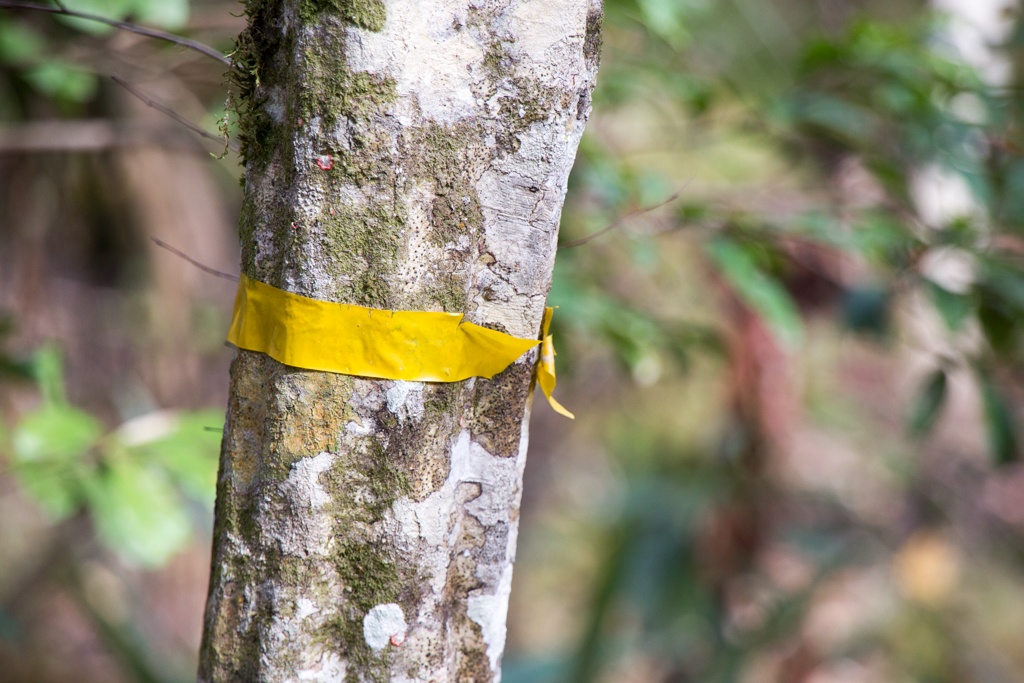
The lack of developed infrastructure was both a blessing and a curse for Buford Spring.
On one hand, the difficult conditions helped limit the number of visitors. Those who did visit were mostly hard-core cave divers. Divers are generally good, conscientious folks who care about protecting nature.
Sadly, the difficult access couldn’t fully protect the spring from human destruction. Even the relatively small number of visitors damaged the natural environment.
The lack of developed infrastructure created its own problems.
Steven Brinkley is the Manager of the Chassahowitzka WMA, and a biologist with the Florida Fish and Wildlife Commission. In an interview with the Hernando Sun, he explained how people have damaged Buford Spring’s natural environment.
Over time, people dumped pallets, gravel, trash and debris into the swamp. They tried to raise the trail to avoid the deep swamp mud. Some cut trees and forged new trails, in search of an easier path.
Feet and fins trampled the fragile natural shoreline of the spring. Footsteps killed root structures and caused erosion.
All of this damaged the environment. None of it aligned with the “Leave No Trace” philosophy.
Boardwalk
To save the spring and prevent further environmental damage, a boardwalk was built. This makes access easier, and has reduced damage to the environment.
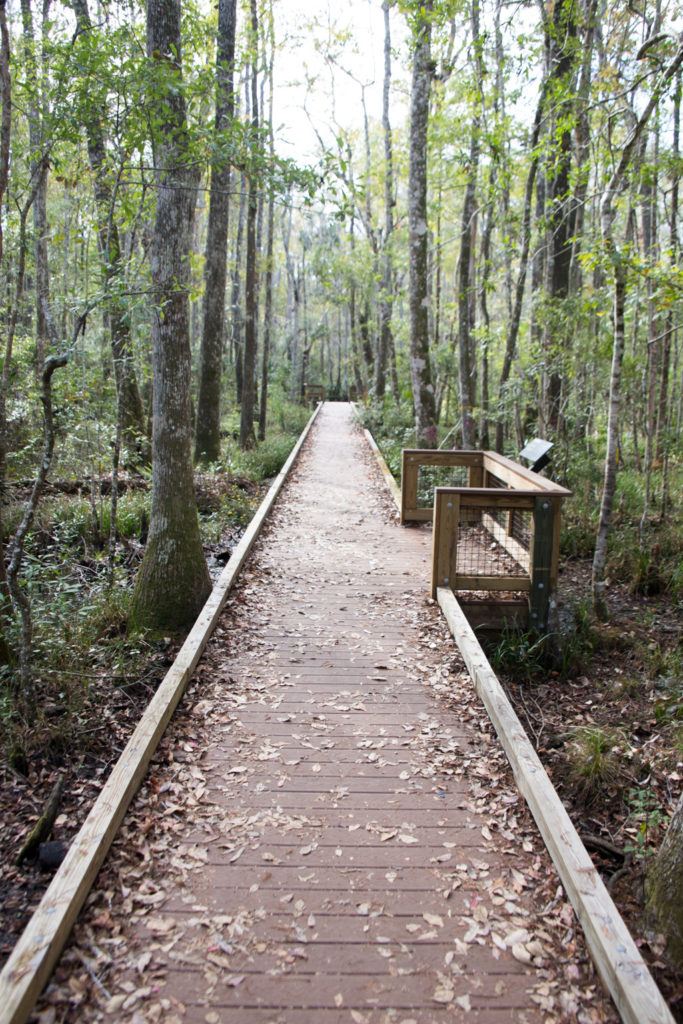
The site now feels very similar to the boardwalk heading to Blue Hole Spring inside Ichetucknee Springs State Park.
Visitor Numbers and Crowds
For better or worse, the boardwalk will surely bring higher numbers of visitors.
Will this be good or bad for the spring in the long-term?
Might it actually be good for Buford, Eagle’s Nest, and Florida’s other endangered springs, in the long-run Only time will tell.
Maybe visitors will actually take care of the spring, and treat it as the magical place it is? I hope so.
I know one thing for sure: Florida’s springs and environment need us. They need good people to fight for them.
Nobody else cares. Politicians don’t care. Real estate developers don’t care. Industrial agriculture doesn’t care. Multinational corporations don’t care. It’s up to us.
If more people love Buford Spring, maybe they’ll use their voice and vote to help protect Florida’s vulnerable waterways and aquifer.
We all know that people only protect what they love. Maybe if access is easier, and more people witness the stunning beauty, they’ll appreciate and protect our environmental treasures?
Luckily Buford Spring has a unique qualities, which I hope might help keep the spring pristine, and protect it from ruin.
I don’t think that Buford Springs will be overly appealing to the masses.
I think it takes a certain type of person to appreciate the site. It should draw nature lovers, divers, freedivers and photographers.
Even with the boardwalk, access isn’t easy. The site is still located in a swamp. Alligators, snakes and mosquitoes are almost guaranteed. Maybe that’ll serve as an effective deterrent.
Even in popular Ichetucknee Springs State Park, not many people make the short walk up to Blue Hole Spring.
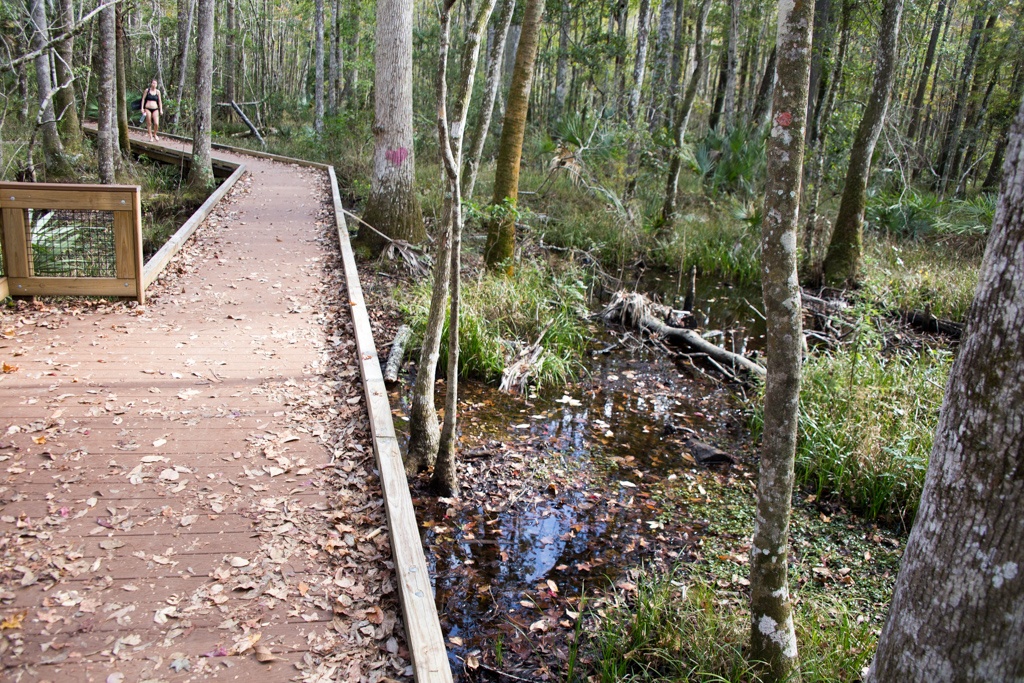
Buford Spring doesn’t have many of the popular features which have ruined other springs.
There’s no opportunity to float or tube down the river, like at Ichetucknee Springs or Ginnie Springs. Besides taking a few photos, there isn’t really much to do above the water.
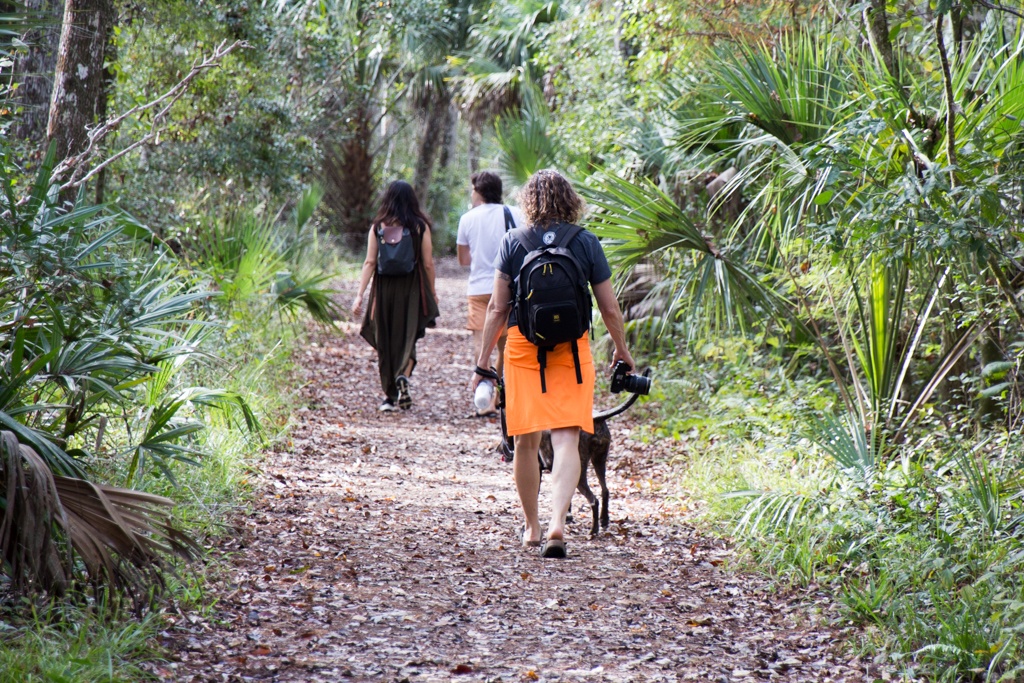
It’s lovely to swim in Buford for a few minutes. But, I think it would quickly get boring for anybody who can’t dive, or explore the expansive underwater features.
A short swim wouldn’t be worth long travel, the inconvenience, or the effort required.
Hopefully this will prevent some of the madness which has ruined other pristine springs.
Location
Buford Spring is located inside the Chassahowitzka Wildlife Management Area.
It’s approximately 6 miles north of the famous Eagles Nest Sink dive site.
There are several entrances to the Chassahowitzka WMA.
Google Maps navigation might take you to a northern gate entrance, which is labeled the “Hernando Sportsmans Club”. It may not be open, depending on the time and season.
If the northern gate is closed you can try to enter via the main entrance a few miles further south.
GPS Coordinates for the Buford Spring trailhead and parking area: 28°37’59.3″N, 82°35’03.6″W
Google Map Link to the Buford Springs Trailhead and Parking Area
Chassahowitzka Wildlife Management Area (WMA)
To access the spring you must enter through the Chassahowitzka Wildlife Management Area entrance and pay the daily use fees. The fee is $3 per person, or $6 per vehicle. You can also buy a yearly pass for $26.50.
Daily Use Information
Annual Pass Information
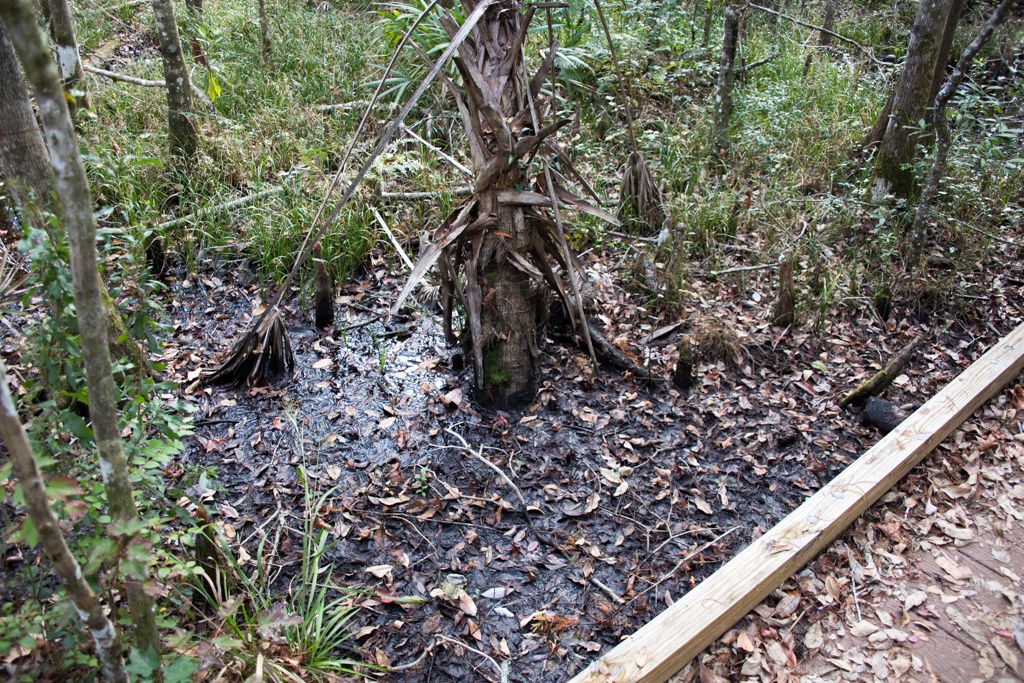
Spring Description
Buford Spring is located inside a swamp. The swamp and ground conditions vary depending on rainfall. The ground will be less saturated during dry periods, and wetter during periods of heavy rain.
Regardless of when you go, there will probably be endless swarms of biting insects, especially mosquitoes and deer flies.
Alligators, snakes, spiders, wild boar and other natural swamp wildlife are often present in and around Buford Springs.
Spring Visibility and Water Condition
The water visibility in Buford Spring varies depending on local rain conditions. During periods of heavy rain, tannic water will decrease the water visibility, sometimes to zero.
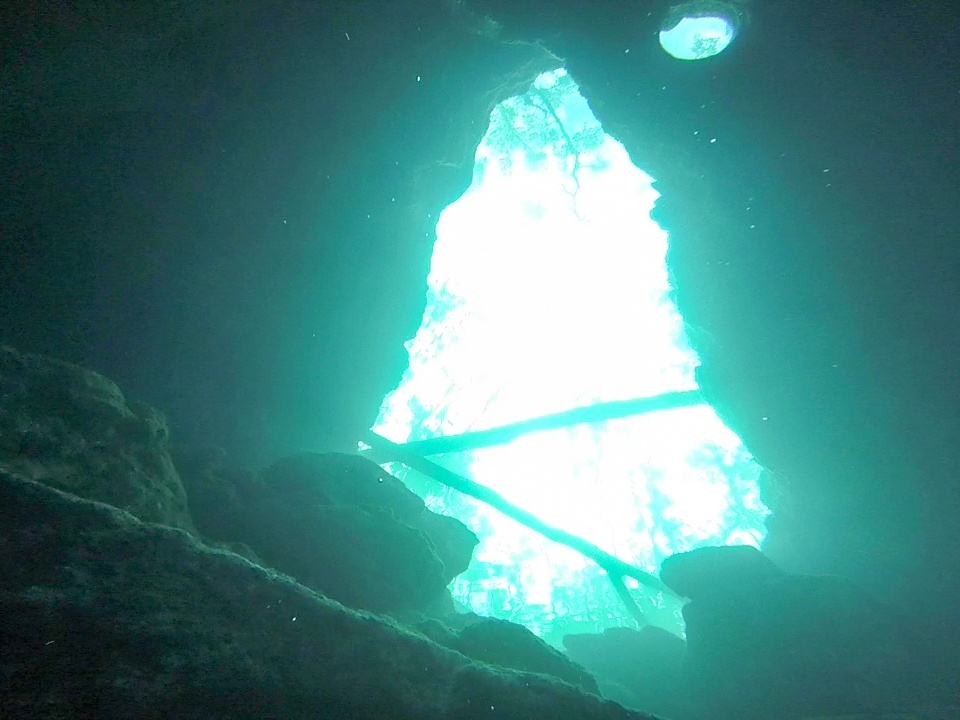
Visibility can be almost unlimited during dry periods, when tannic water is not a factor.
The water can also take on a hazy green tint at times, which limits visibility. Divers and swimmers should be careful not to disturb silt, mud or other debris which will decrease visibility. There is usually a lot of silt on horizontal surfaces like ledges and overhangs.
For the best water conditions, most experienced divers suggest only going during or after dry periods, when there has not been heavy rainfall. Heavy rains decrease visibility greatly.
Depth
At its deepest, Buford Springs is more than 150 feet deep (46 meters).
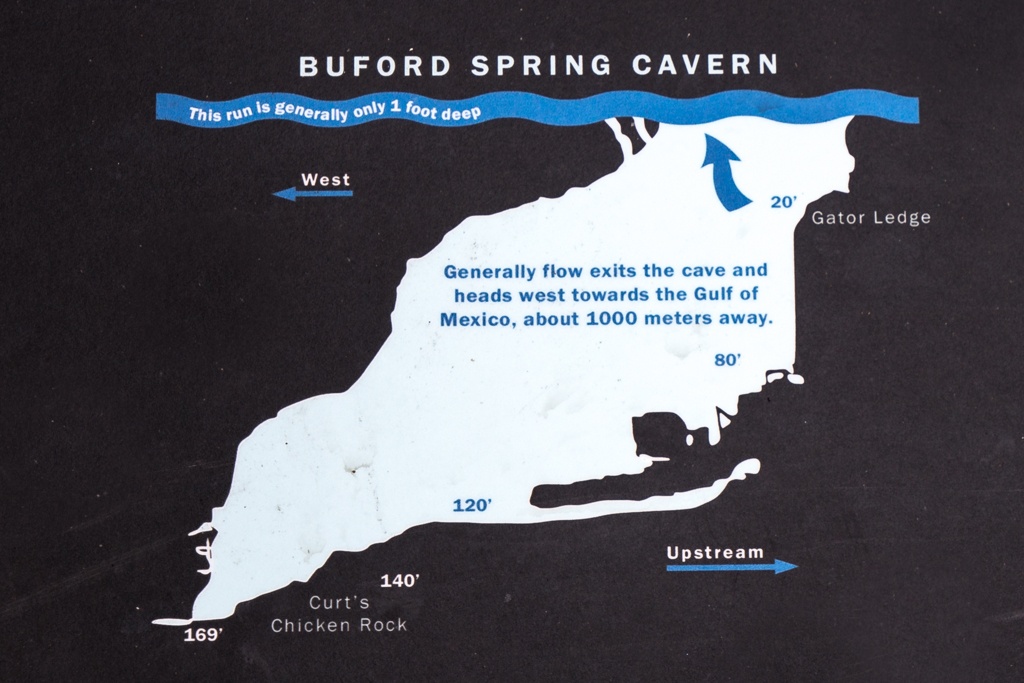

Safety
Any visit to Buford Springs involves danger.
- The Chassahowitzka Wildlife Management Area is a wild, undeveloped area with numerous hazards.
- Help and medical care may be distant or unreachable in an emergency.
- Cell phone reception may be limited.
SCUBA, freediving and cave diving are inherently dangerous activities.
Visitors should take all necessary precautions to keep themselves safe, avoid dangerous activities and ensure they do not exceed their own training or limitations.
Do not dive, or attempt to dive, unless you have all proper cave diving training, equipment, knowledge and certification.
Many people have died in Buford Springs, and the nearby Eagle’s Nest Sink Hole dive site. Eagle’s Nest is recognized as one of the most dangerous dive sites in the world.
- Alligators, snakes, spiders, hogs and other swamplife are almost guaranteed to be present. Be careful.
- The Chassahowitzka WMA is a very active hunting spot. Plan and act accordingly!
- This is a very remote location. Help is a long way away.
- The water level is dangerously shallow in front of the dock. Do not dive into shallow water!
- When I last visited there were climbing rungs on some trees. They didn’t look sturdy to me, I would not climb them.
- Jumping into the water causes waves, which erodes the fragile shore line, reduces visibility and causes sedimentation of the spring.
Threats to Spring
Humans are the greatest threat to Buford Spring, like all natural springs in Florida.
Threats come from many directions:
- Trampling of plants and soil erosion
- Gasoline and oil leaks from cars
- Wildfires caused by hot cars and people
- Excessive groundwater usage and pumping depletes the Florida Aquifer
- Fertilizer and nitrogen pollution
- Invasive species
- Litter, trash and debris
- And more
Spring Run
There’s a small, shallow spring run which flows to the nearby Little Gator Siphon.
Scuba Diving
Cave diving is dangerous. Only properly certified and trained divers should dive in Buford Springs.
Notice: SCUBA diving and swimming in overhead environments is extremely dangerous and should never be attempted, except by properly trained, experienced and equipped individuals.
Notice: Tragically, people have died in Buford Springs, Eagle’s Nest, and many other springs in Florida.
Visitors should take all appropriate precautions and should never exceed their own abilities or safety limitations. Visitors are advised to consult professional, expert advice for any questions, and should not rely on the information contained in this guide for anything other than general entertainment purposes.
To scuba dive at Buford Spring you must register with the FWC. Registration is free and must be completed for each dive and diver.

Best Time to Visit
The best time of the day to visit is on a clear, cloudless day when the sun is high overhead. Even modest cloud cover blocks the direct sunlight, which has a dramatic effect on the cavern lighting.
The sun’s position varies based on the season.
For the best lighting, try to be in the water between approx. 11 a.m. until 2 p.m. The overhead sunlight shines down into the sink and illuminates the site nicely.
Buford Springs is known for having some of the clearest water in Florida. On a day with good visibility the sun’s rays shine into a beautiful, shimmering spotlight effect.
Most folks recommend against visiting in the summer, due to several factors:
- Increased rainfall reduces visibility
- Swamp water levels are likely to be higher due to summer rain
- Extremely hot temperatures
- Increased mosquito and insect activity
- Alligator activity and mating behavior
Like almost all of Florida’s springs, the water temperature in Buford Spring remains a pretty constant temperature, around 72-75 degrees. It varies depending on recent rainfall amounts.
After heavy rains the water’s visibility may be greatly reduced. For the best visibility, try to go during dry periods and when there has not been recent rainfall.
Photography Tips:
- Buford Springs is a beautiful spring for underwater photography. It has some of the clearest water in Florida, which makes for beautiful photographs and light effects. Light conditions can be dark inside the cavern, so try to be ready when the sun is directly overhead.
- Water clarity can vary dramatically depending on rainfall. When the spring is crowded sediment can decrease visibility.
- When on dry land, consider using a polarized lens to reduce glare and reflection on the water surface. It will reduce the amount of light which hits the lens, so be sure to compensate other camera settings accordingly.
- During cold weather, water vapor rises off of the water. Captured in the right moment, it gives a beautiful, eerie effect; especially when combined with the dramatic swamp backdrop. It’s less dramatic, but similar to the famous Devil’s Den Spring.
Alligator Safety
Be aware of alligator activity. This spring is set inside a swamp. I would assume there are alligators, snakes, wild hogs and other dangerous wildlife present.
Be especially aware of alligator activity during mating season. Always know and use appropriate alligator safety precautions. For more information visit the Florida FWC.
The alligator mating season has several stages.
Courtship begins around early April, and mating follows around May and June.
To prepare their nesting sites, female alligators gather soil, plant debris and other materials. Females lay eggs in late June to early July. The eggs hatch in late summer, around the middle of August to early September.
Hunting season
Besides SCUBA diving, hunting is the primary activity in the Chassahowitzka WMA.
Be sure to check the hunting dates and all related information. If you have any questions, be sure to contact the Florida FWC and before going. If you visit during any hunting activity, be sure to know and follow appropriate hunting safety precautions.
Things to Bring
- I suggest bringing a map! You may not have cell phone reception.
- Good, effective bug and mosquito protection
- Hat, sun protection
- Polarized sunglasses
- Trash bags to pick up litter left by other people
- Wetsuit
- Mask
- Fins
- Polarized camera lens
- Underwater Camera
- A cart to haul gear
